If you’re ever forced back on your own resources for the long term, home canning is going to be an essential skill. You can’t grow your own vegetables all year round; there’s a growing season followed by a harvest season, and how long they are and when they end are determined by the climate. Once you’ve harvested your crop for the year, that’s it; there won’t be any more until next year.
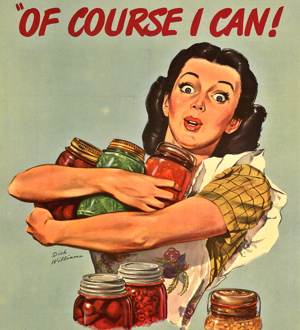 To keep your diet healthy through the year you’re going to have to preserve the bulk of what you’ve grown for later use. The simplest way is by freezing, but what if power has become unreliable? Even a few hours’ blackout could spoil everything you have stored. The only reliable way to preserve your own vegetables is canning, and that means it’s a skill everyone should have.
To keep your diet healthy through the year you’re going to have to preserve the bulk of what you’ve grown for later use. The simplest way is by freezing, but what if power has become unreliable? Even a few hours’ blackout could spoil everything you have stored. The only reliable way to preserve your own vegetables is canning, and that means it’s a skill everyone should have.
Canning isn’t a complicated process, and it doesn’t need much in the way of equipment. As long as you have suitable jars, lids and a way to boil water you’re all set. What it does need, however, is attention to detail. If you’re not careful you could end up with food that spoils in the jar – or becomes a deadly hazard.
Related: 13 Myths and Facts About Canned Foods
#1 Principles of Canning
Food spoils because oxygen breaks down some of the nutrients it contains, and microorganisms grow and feed on it. Canning preserves the food by protecting it from both of these threats. If the food is inside the jar, and the oxygen and microorganisms are outside, they can’t get in to spoil it. Right?
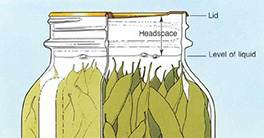 Well, kind of. That’s the basic idea, but it’s not as simple as just getting a good seal when you put the lid on. There’s always going to be some oxygen trapped inside the jar, but if there’s too much it could be enough to spoil the contents before it’s all used up. Too much oxygen will also let bacteria or mold keep growing. It’s essential to get as much air out of your jars as possible before you seal them.
Well, kind of. That’s the basic idea, but it’s not as simple as just getting a good seal when you put the lid on. There’s always going to be some oxygen trapped inside the jar, but if there’s too much it could be enough to spoil the contents before it’s all used up. Too much oxygen will also let bacteria or mold keep growing. It’s essential to get as much air out of your jars as possible before you seal them.
Unfortunately, that can cause another, and much more serious, problem. Most bacteria won’t grow if there isn’t enough oxygen in their environment, but there are a few that won’t grow if there’s too much. Some of them are harmless, some will give you an upset stomach, but one of them is potentially deadly – and it grows like wildfire in food that hasn’t been properly canned.
This microbe is a bacteria called Clostridium botulinum. It’s very common in soil, and is found all over the world. Most vegetables are exposed to the bacteria as they grow. Normally this isn’t a problem, though. In a normal environment C. botulinumis dormant, because it can’t grow if there’s more than about two percent oxygen in the air. Put it somewhere with little or no oxygen, however, and it will start to grow rapidly – and as it grows it produces a neurotoxin. The common name for this is botox, and it’s what some people get injected into their face to get rid of wrinkles. But wrinkle treatment uses tiny amounts of highly diluted botox, and here’s why:
Botox is the most poisonous substance ever discovered – far more deadly than cyanide, rattlesnake venom or military nerve agents. An ounce of pure Botox will kill 175,000 people – and a fraction of a milligram in a jar of contaminated food is all it takes to kill you.
Properly canned food is safe from botulinum contamination – but do it wrong and you’re playing Russian Roulette. Sooner or later, unless you take the right precautions, you’ll open a jar that has a colony of C. botulinum growing inside. If you notice the symptoms in time and can get to a good hospital it can be treated easily enough – but in a SHTF scenario you’re dead.
When you’re relying on your own resources the only defense against botulism is to can your food properly and prevent the bacteria getting a hold. The way to do that is to avoid these deadly mistakes:
#2 Canning Bacteria
The fewer bacteria go into the jar along with your fruit or vegetables, the lower the risk of a dangerous infection. That means you need to get the food as clean as possible before it goes into the jar. Anything that grows above ground should be thoroughly washed, but vegetables that are directly exposed to soil probably won’t be clean enough even after scrubbing. Peel them instead, to make sure all soil residue and bacteria are removed. Tomatoes should also be peeled. For extra safety, blanching will kill many bacteria.
Once you’ve got your produce clean, don’t recontaminate it. Jars, lids and any utensils you’re using all need to be sterilized. Clean enough for normal food preparation doesn’t mean clean enough for canning. When you’re cooking dinner and a few bacteria slip through it doesn’t matter much – they won’t have time to grow. It’s a different ball game when you’re planning to store canned food for months or years. Even if there are only a few microbes when you seal the jar, there can be trillions by the time you eat the contents.
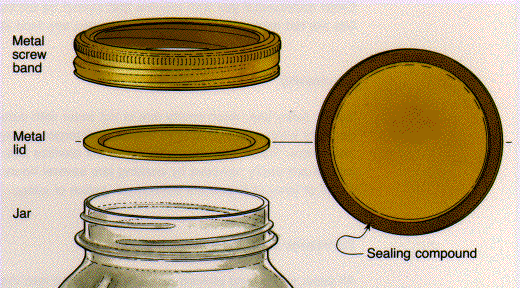
Related: How to Tell When Your Canned Foods Become Spoiled?
#3 Forgetting the Acid
C. botulinum grows best in a non-acidic environment. Acid slows the bacteria’s growth and can even destroy them. Unfortunately, most of the vegetables popular with home canners have a low acid content, making them more likely to host botulinum. Tomatoes are one exception; there are low-acid varieties, but for canning you should avoid those. With other vegetables, consider adding some acid to the mix. Vinegar or lemon juice are good options that can also enhance the flavor. You don’t need to add enough to pickle the contents, but if you can push the pH of the liquid below 4.6 that will do a lot to keep your food safe.
With the exception of bananas and some varieties of apples and pears, fruits have a much higher acid content than vegetables. This doesn’t eliminate the risk of botulism, but it does reduce it.
#4 Keeping it Cool
Heat is one of the most reliable ways to destroy bacteria, including C. botulinum – if you use a high enough temperature for long enough. Fruit and tomatoes – acidic foods – can be safely canned using boiling water, because the botulism risk is low anyway. The same goes for other vegetables that have had acid added. Simple boiling doesn’t give any safety margin for less acidic foods, though. If you’re canning meat or low-acid vegetables the only way to ensure safety is to heat them to at least 240°F, and that means using a pressure canner. If you’re canning without electricity a pressure cooker can be used. A USDA-approved pressure cooker should boil water at 250°F, which gives a good safety margin.
#5 Bad Seals
Check the seal on every jar before you store it. Press metal lids with a finger; if there’s any give in it, the jar isn’t properly sealed. For screw band type lids, you should remove the band and pull gently at the lid. If it’s sealed it will stay on the jar; if it comes off, refrigerate the contents or eat them right away.
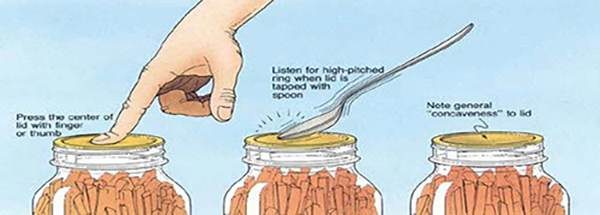
#6 Sloppy Storage
Storing your canned food in the wrong place can quickly shorten its life, lower its quality and even make it dangerous. On the other hand, correct storage will preserve it and keep it safe.
Clear glass jars let light in, and that can discolor many canned foods. It’s not a serious problem but it does make them less appetizing. Store your jars somewhere dark – or, at the very least, out of direct sunlight.
Look for a cool place. Heat is essential during the actual canning process, but once your jars are sealed it becomes an enemy. Temperatures above 75°F can make vegetables turn mushy, and they also encourage microorganisms to grow.
Dampness is also bad news. Glass is immune to it, but lids and screw bands can rust. It’ll take a while for them to rust right through, but rusty edges can start leaking tiny quantities of air. That won’t help botulinum, but there are plenty other bacteria and molds that can spoil your food and make you ill.
#7 Forgetting to Check
Don’t just open a jar of canned food and dig in with your spoon. Check the container before opening; is anything cracked or distorted? Do the contents look discolored? Are there any signs of leaks? If you spot any of those things throw the food away. When you open the jar there should be a rush of air as the vacuum inside breaks; if there isn’t then the seal might have failed, and the contents aren’t safe. Also get rid of anything that spurts liquid or foam when you open it.
Any sign of mold inside the jar means it’s either leaked or wasn’t properly sterilized to start with. The mold itself could make you sick but it’s also an indicator that bacteria could be – and probably is – growing in there too. Throw it away.
You may also like:
What Should You Do With Your Canned Foods After the Expiration Date?
An Insanely Effective Way to Build a 5 Year Food Stockpile (Video)
My Grandma’s Method of Canning Eggplant
How to Can Simple Tomato Sauce from Fresh Tomatoes and Peppers

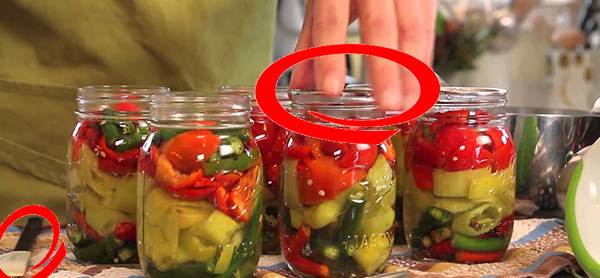














When I retired a lady much older than myself told me how shes canned. It was to cook everything before putting it in jar. I try not to cook it to long so it doesn’t get mussy in the jars. It has worked well for me. What do you think abutt doing that?
I was taught to can by my mother many, many years ago. Now, at the age of sixty, my wife and I still can, and greatly enjoy doing so, but we can strictly by the book – we use Ball’s Blue Book. We have had a seal not hold occasionally, maybe one or two a year, but with the volume we can, we can’t complain. So my advice – do it by the book. If we can meats, we precook to reduce the amount of grease jarred. This seems to improve the flavor to us, plus increases the odds of a good jar to lid seal
Don’t wait to learn to can until you really need that skill.
I’ve seen multiple people complaining that the newer silver lids and bands often fail to seal. Some had entire batches that did not seal.
Maybe that was a temporary manufacturing issue, but just in case, I only use gold ones I buy in bulk. I use the silver ones for other purposes — not canning.
Note that the newer bands (gold and silver) have a smaller sealing area than the old ones did.
If you heat your lids before applying, do NOT use them if you accidentally let them boil. At least some of them probably won’t seal. Boiling seems to damage the seals.
Heating them is not supposed to be necessary anymore when you’re using a pressure canner (but I still do it anyway).
Gail: I am wondering if the silver lids that do not seal are made in China? I have found that some of the Tractor Supply canning jars they sell are of insufficient quality and are def. made in China! They may sealf or some things, but in a pressure canner, they buckle and warp!
Also, if a person fills the jar too full, then the food will bubble up under the lid and cause the lid to fail to seal. That is something to think about, as I have had zero problems with the silver lids from Ball, myself. You really MUST not fill the jars all the way to the top, but stop just below the “shoulder” of the jar.
We’ve found the opposite. The gold lids and bands are terrible and are more prone to rust.
We only use silver Ball, Kerr or ForJar lids.
the video about 3 common mistakes for home defense ? too long winded, no info, just a schmuck in love with his own voice. if he has good info, just tell it, and go on. not worth any’one’s time
I have canned for years and always Goldsworthy everything but The newer jar lids do not have to be boiled. Just wash well with soap and hot water.
If the newer lids on the market today are boiled it ruins the ability to seal right.
The new lids used in canning do not have to be boiled like the old ones did. Just wash in hot soapy water.
The new lids have been reworked so if boiled the lid will have problems sealing.
My “Granny,” a Shenandoah Valley farm girl born circa 1888, canned extensively up until we moved to the “city” in ’51. In ALL of her canning, she applied a layer of Paraffin wax on top of the contents as the last step before applying the lid. This left NO head-space air in contact with the contents. That seems like a good idea to me, BUT…
In all of the canning articles I’ve read over many years, I’ve never seen that technique mentioned; why?
We added paraffin to jellies and jams up north but never to pressure canning. I moved to Florida and tried to use parafin on jellies & jams and had BIG problems..
Add a Little vinegar to the contents being canned this will kill any bacteria. Colloidal silver, Ionic silver is better to kill bacteria, mold etc. check YouTube for ways of making your own, specifically “Capped” it will last long and is even more powerful and won’t alter the taste.
Oregano oil or water is even more powerful but will alter the taste unless it is called for in whatever you are canning.
Colloidal copper and zinc are more powerful than any silver.
With all metals used make sure they are N4 or N5 these have the least impurities.
CDS water can also be used as it is considered the universal antidote or antibiotic, but this has been retracted by the CDC, NIH etc., because of pressure from the medical mafia.
Ultraviolet light from quartz bulbs water purifiers could be used before canning and after opening just to make sure all bacteria, pathogens are dead.
High alcohol contend spirits like vodka can also be used.
Meat cook first then can.
Other things can be used as anti-pathogenic but no time to put it all here but anything that has the desired anti pathogen qualities can be used.
How much silver do you add?